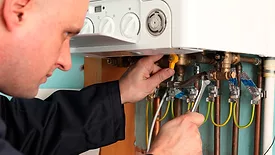Home » Keywords: » hydronic systems
Items Tagged with 'hydronic systems'
ARTICLES
Hydronics Workshop | John Siegenthaler
Advanced ways injection mixing can manage temperature, protect equipment, and stabilize modern hydronic systems.
Read More
Project Profile
Radiant roots: preserving history while powering modern comfort
Elaborate plan delivers efficiency for former Amish barn built in 1838.
November 14, 2025
Taco Next Generation Zone Controls hydronic system control
Taco has upgraded the features of their hydronic control system.
June 9, 2025
Taco celebrates 50 Years of innovation with the 007 circulator
This year marked five decades since the release of the 007 circulator.
April 27, 2025
Hydronics Workshop | John Siegenthaler
Be prepared to advocate for hydronic-based heat pump systems
Different strokes.
March 9, 2025
Hydronics Workshop | John Siegenthaler
Heat pumps open possibilities for DWH and hydronic-based cooling
Expanding a concept — part two.
February 4, 2025
Hydronics Workshop | John Siegenthaler
Adding functionality to heat pump systems
Expanding a concept — part one.
January 2, 2025
Hydronics Workshop | John Siegenthaler
Cutting-edge hydronics technology delivers superior efficiency and comfort
Chill chaser.
December 4, 2024
Keep your content unclogged with our newsletters!
Stay in the know on the latest plumbing & piping industry trends.
JOIN TODAY!Copyright ©2025. All Rights Reserved BNP Media.
Design, CMS, Hosting & Web Development :: ePublishing











